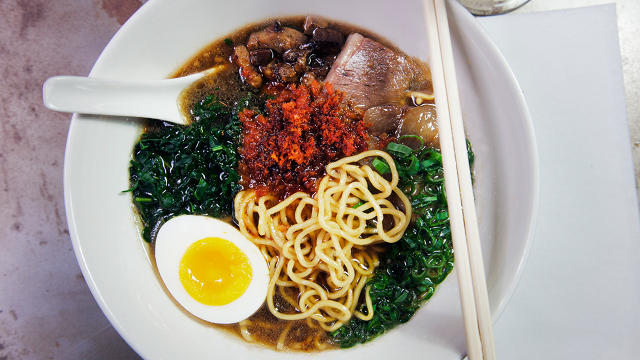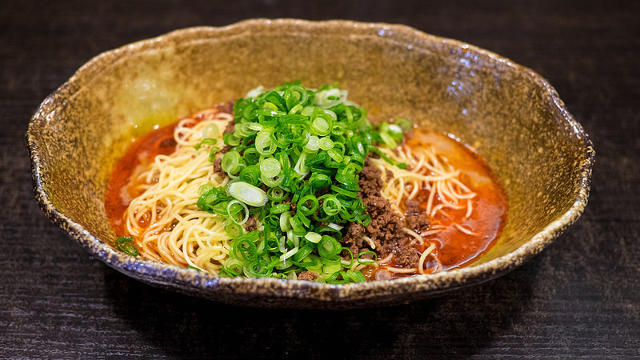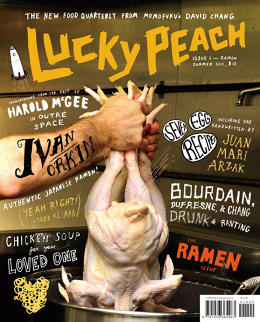How japanese marketing secrets and techniques Sparked The American Ramen Revolution
The noodle has delighted and dominated the culinary world. Why? Decoding the spicy hype at the back of simple bowls of soup.
February 23, 2015
within the useless of iciness, a japanese ramen chain known as Santouka determined to launch an outpost in Cambridge, Massachusetts, proper throughout the road from Harvard Yard.
Santouka focuses on a particular kind of pork-broth ramen from the Hokkaido region of Japan which, relying on the toppings you select will value between $12 and $15 a bowl. setting up a ramen store in a university city is smart in a humorous roughly manner. American faculty students love rapid ramen, that miracle food which cooks in three minutes flat, is straightforward on the wallet, and tastes beautiful darn just right. Santouka is banking on the idea that college students will spring for an upscale version of their favorite remedy food after a examination or a particularly lengthy day on the library. After just a week in industry, their strategy seems to be proper on the money.
On the day of Santouka’s opening, Cambridge was in the midst of essentially the most brutal snowfall it had seen in years, however it used to be nonetheless inconceivable for me to get a table. Like most ramen stores in Japan, Santouka does now not take reservations, so a crowd of freezing ramen fanatics waited within the entrance of the retailer, hoping that seated buyers would slurp down their noodles fast. I went again just a few days later, hoping for a shorter wait, but all over again, I was instructed i’d be in line for no less than an hour. This time, I was once determined to not leave out out, so I patiently waited in the cold until my number was once referred to as. And when my steaming bowl of soup arrived, I was no longer disillusioned: The broth was once thick and rich, the components—pork slices, fish cake, mushrooms, corn, seaweed—brought attention-grabbing textures and flavors, and the noodles were satisfyingly chewy.
Scaling snowbanks and braving frostbite don’t, on the skin, appear to be cheap issues to do in pursuit of a bowl of soup. however i am far from by myself in my fixation with the noodle. Ramen has invaded the united states: all over you turn any person is both slurping ramen or speaking about it. And it can be now arduous to imagine that we (learn: faculty college students) ever consumed a budget packets of Nissin or Maruchan fast noodles that got here to the united states in the Nineteen Seventies.

the big apple and los angeles are now saturated with gourmand ramen stores, with neighborhood hole-in-the wall joints competing with based japanese manufacturers like Totto Ramen, Ippudo, and Ivan Ramen. sun Noodle, the Hawaii-based totally company that provides the vast majority of those American ramen shops, produces 90,000 servings of ramen per day in three factories to accommodate demand.
one in every of the united states’s very best-recognized cooksnodeprofession in 2004 by using starting Momofuku Noodle Bar—named after the person who invented fast noodles—and shifted ramen from a dish served primarily in Asian American neighborhoods to the guts of america’s meals scene. Ramen is hotly discussed in apparently each major journal and newspaper, from the big apple occasions to the Wall boulevard Journal to meals & Wine to lucky Peach (which committed an entire issue to ramen in January). And that’s no longer even counting the slew of blogs dedicated to the result in, like Ramen Shaman and Go Ramen. ultimate year, a historical past professor at new york college even released an academic treatise about ramen’s historical past.

what’s going on? How did ramen enter the American zeitgeist with such a massive splash?
After speaking to ramen consultants of many stripes—cultural historians, professional ramen commentators, restaurant homeowners—one lesser-discussed fact of the phenomenon is that the American ramen revolution did not happen accidentally. Ramen restaurant entrepreneurs have deployed eastern advertising and marketing methods to create a cult following for this humble dish within the U.S. Purveyors of ramen have cleverly used the media to spark trends, they’ve carefully considered how consuming food is as so much about performance as pleasure, and they have played into the greater trend of elevating simple foods via craftsmanship. right here’s how they did it:
The artwork of producing A meals Craze
Brian MacDuckston, one of the vital world’s best possible-recognized ramen commentators, is an American who has lived in Japan since 2006; he often shares his ideas about ramen culture on jap tv and magazines, he has his own widespread ramen YouTube series, and five years in the past, he took a ny instances reporter on a tour of Tokyo ramen joints. MacDuckston explains that eastern media has a cosmopolitan way of manufacturing food trends. over the last 20 years, japanese newsstands have been flooded with dozens of weekly and monthly magazines that record on very specific food subcultures together with, of course, ramen. “There are six or seven ramen magazines in Tokyo alone,” he says. “countrywide, there are even more.”

These magazines do not simply file on these fads, they are additionally in the trade of igniting new developments and maintaining them alive. whereas U.S. media is also instrumental in developing meals traits, the scale and class of the japanese food media is in a league of its own, consistent with Nathan Shockey, a professor of jap at Bard school and a ramen aficionado. “Japan has extremely developed marketing to cater to the latest traits,” Shockey says. “The magazine industry fuels the speed and depth of the ramen fixation in Japan.”
Ramen save house owners in Japan are totally aware that it’s not enough to supply tasty and authentic dishes: They want to work the media to get folks talking about them. Shockey says that there is infrequently any bad media coverage about restaurants in Japan, which implies that food writers have a collaborative, mutual-again-scratching more or less relationship with cooks and shopkeepers. In different phrases, even small hole-in-the-wall stores are neatly versed in PR strategies and can maneuver their manner into foodie magazines.
When gourmand ramen first got here to the U.S. from Japan, many restaurant house owners brought with them experience about the way to navigate the media. at the time, food running a blog was once beginning to mature in the U.S. and it operated in line with very equivalent dynamics as eastern food magazines. jap ramen entrepreneurs within the U.S. were neatly poised to work with blogs to create buzz about their restaurants. “Over the last few years, we’ve developed a complete running a blog tradition around meals in the U.S., with personal blogs on Tumblr and publications like severe Eats, Grub street, and Eater focusing on meals traits,” says Shockey. “nevertheless it was already like that 20 or 30 years ago in Japan because of the various meals magazines.”
plenty of ramen ventures in the U.S. have a exceptional capacity to secure protection in the blogosphere. Take Santouka in Cambridge, as an example. Nao White, a meals consultant from Japan who helped launch the restaurant’s East Coast presence, tells me the company didn’t do any native advertising; there are not any billboard or flyers about the store, nor are there print or radio commercials. as a substitute, all marketing efforts were media driven. within the months sooner than the keep opened, a circulate of coverage started showing on native blogs. Eater Boston coated the retailer no less than 4 times prior to the primary bowl of ramen was served.
Santouka was also talked about in native blogs like Bostinno and Boston restaurants, as well as in Harvard’s college paper, the Crimson. Media hype is that it feeds on itself: Ramen entrepreneurs need to work to get the phrase out, but after the initial push, bloggers will write a few specific shop as a result of they don’t need to be behind the pattern. With all that buzz, it’s no marvel that it was once unimaginable for me to get a desk on opening day.

The Psychology Of strains
speaking of lines, making consumers wait is any other vital part of ramen tradition. Most ramen eating places in Japan refuse to take reservations, and this appears to be a strategic move on their phase. “making a line in entrance of the keep is a form of promoting for the restaurant,” says Shockey. eastern consumers, for his or her part, are used to ready to get a seat at a restaurant, and there seems to be an implicit working out that good meals is definitely worth the sacrifice of time and luxury.
there is various psychology that goes into waiting in line: It builds up anticipation and might trick customers into feeling more happy with their meals. That was once surely what happened to me at Santouka: After an hour of imagining my future bowl of noodles, all of my senses were heightened when it was ultimately brought out to me on a platter. every morsel tasted good because I felt like I had earned it. that experience did not happen organically: It was once manufactured with the aid of the restaurant, in part, as a result of it selected not to take reservations. White says that Santouka has no intention of transferring to a reservation platform like OpenTable and has chosen, as a substitute, to invest in TapGuest, a expertise that manages the waitlists.
Shockey factors out that going out to a restaurant is, in many ways, just as much about making a public statement as about private pleasure. “It’s a more or less performance,” he says. “For the customer, ready in line turns into its own roughly unique experience. It allows you to be in contact to other people that you are doing something cool and you’re about to participate in an eating expertise that is so superior you had been keen to wait two hours for it.”
For americans accustomed to making reservations, standing in line at a ramen save bargains a taste into the broader experience of dining in Japan. in many restaurants, the kitchen is totally seen so buyers ready to be seated can take within the complexity of the ramen-making process: they can smell the broth that has been cooking for days and notice the array of toppings that cooks are throwing into the bowls.

The components For promoting remedy food
MacDuckston tells me that Japan has a protracted history of revealing appreciate for easy meals. eastern meals magazines steadily particularly focus on affordable stores which can be pushing the boundaries of their cuisine to the best possible ranges of craftsmanship. there may be a whole category of meals called “B-category connoisseur” and, in many ways, ramen is the king of this class. “In the most effective shops in Tokyo that are using uniqueness soy sauce from micro distilleries, they still don’t cost more than $10,” he says.
about a decade in the past, the U.S. all of sudden developed its personal fascination with elevating remedy meals. high-tier restaurants throughout the united states of america began serving bone marrow burgers, lobster mac and cheese, and connoisseur cupcakes. Chang’s Momofuko Noodle Bar used to be a part of this pattern; it paid homage to the simple noodles that Asian-American kids ate after faculty while their Caucasian counterparts noshed on easy Mac. japanese restaurant entrepreneurs who came to the U.S. had been additionally keenly aware of this trend and had years of expertise navigating the complexities of transforming simple dishes into works of art with out making them feel pretentious or sophisticated. “The soup is so easy,” says White. “it’s only broth, noodles, and a few toppings, however every ingredient tells a narrative. It allows each chef to create a ramen recipe that’s completely totally different from every other version and give an explanation for how each phase is made.”
To enhance a loyal following, ramen retail outlets need to tread a delicate line between staying easy but additionally innovating so that your dish has its own persona. And ramen is one of the best canvas for culinary creativity, partially as a result of it’s a quite new meals on the sector stage and isn’t considered sacred: Ramen shops, as we know them as of late, simplest began appearing in Japan in the 1960s. “Being such a new food means there are in point of fact no rules with ramen,” says MacDuckston. “It’s not like sushi or even soba noodles which have a convention of being made in line with very clear specs.”

In Japan, ramen restaurants have found out the formulation for tweaking alleviation food so that it stays exciting with out seeming like only a fad or a gimmick. that is something that many American food entrepreneurs are still seeking to do successfully. Cupcakes, for example, were a big trend that crashed and burned. in the meantime, there may be some speak that the connoisseur burger might be losing steam. Some folks, like David Chang, are concerned that ramen retail outlets within the U.S. are turning into too homogenous. “I don’t wish to go to every city and taste the same fucking factor,” he wrote in lucky Peach. “people are sharing the same expertise, however ramen just isn’t supposed to be about that; it’s meals for those who don’t want the identical expertise, that don’t need to be a part of the mainstream.”
but ramen specialists from Japan, like Santouka’s Nao White, aren’t concerned about oversaturation. in spite of everything, the ramen trade in Japan has managed to maintain excitement about ramen for many years now and he or she believes the ramen entrepreneurs bringing restaurants to the usa have the talents to maintain the trend alive here. Santouka itself has been very a hit in Japan with over 20 shops which were around for three decades. “Ramen fans have totally different tastes so much the same approach folks have completely different preferences with music,” she says. “we can attract clients who need a simple broth in a tight component, but not some distance from here, there may be any other keep that serves an enormous, rich bowl of soup that looks like something you wish to triumph over.”
White believes there may be enough room out there for everybody, which is why she is dedicated to bringing Santouka to extra areas in the U.S. Now that the Cambridge shop is up and working, she is considering new Boston locations and after that, who knows?
(201)














